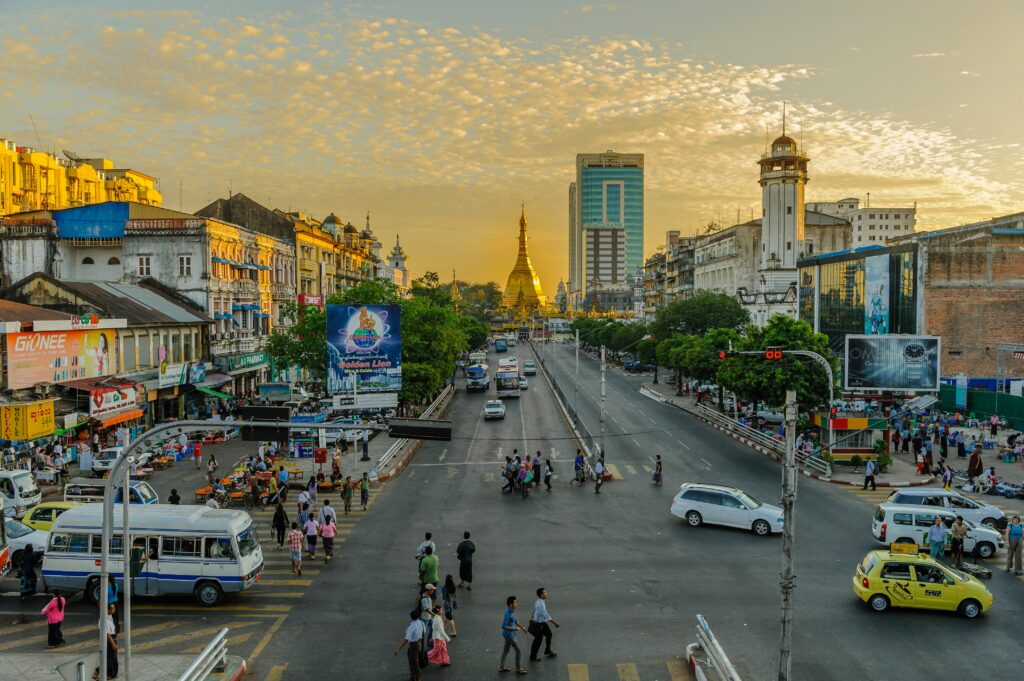
Why Myanmar?
Mingalaba from the Golden Land! Imagine drifting past misty temples at sunrise in Bagan, riding a century-old train over the Goteik Viaduct, or sharing mohinga with a monk in a bustling morning market – these are the best parts of Myanmar. There are, unfortunately, some downsides to visiting at the moment – and we’ll get to those. Our advice is to take your government’s travel advisories very seriously at this time.
But for you dreamers imagining a future where this wonderful country is safe to explore and you want to start planning now, we got you. Let’s get lost in the backstreets of Yangon and float through Inle Lake on longtail boats — we’re here to show you how to get started. Stick around to the end for the best films set in Myanmar so you can get inspired while planning.
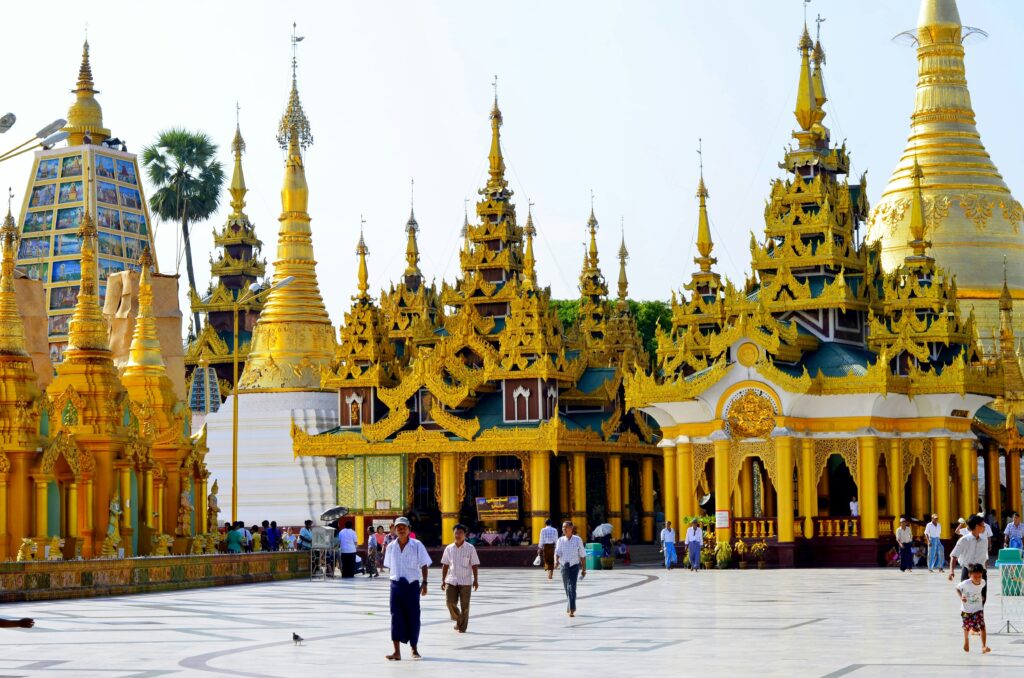
First, the Basics:
Myanmar (formerly Burma) is a Southeast Asian country bordered by Thailand, Laos, China, India, and Bangladesh, with a long stretch of Andaman Sea coastline. It’s a land of golden pagodas, tea houses, lush mountains, and centuries of layered history — both glorious and complex.
Know the Background:
The story of Myanmar goes back millennia, with ancient kingdoms like Pagan, Ava, and the Konbaung Dynasty leaving long cultural legacies. The British colonized it in the 19th century, incorporating it into British India. After WWII, Myanmar gained independence in 1948—but faced decades of military rule and isolation.
In recent years, Myanmar opened up to tourism and the world, though it remains a place of contrast and complexity. Pro-democracy efforts, ethnic diversity, and modern-day challenges shape daily life. But from Yangon to Mandalay, from hill tribes to coastal communities, the people of Myanmar are warm, deeply spiritual, and proud of their heritage.
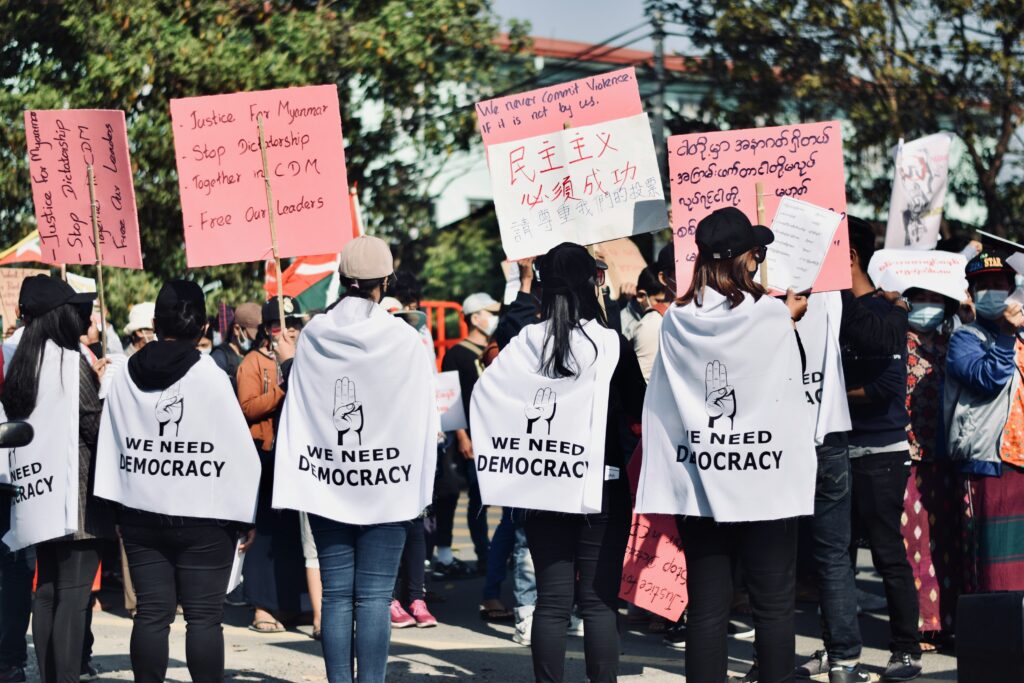
Important To Understand:
As of May 2025, Myanmar remains engulfed in a complex and brutal civil war, marking over four years since the military coup in February 2021. The conflict has escalated into one of the world’s most severe humanitarian crises, with more than 3.5 million people displaced and over 53,000 reported deaths, including approximately 9,000 civilians.
Who’s Fighting Whom?
The military junta, known as the State Administration Council (SAC), is battling a diverse coalition of resistance forces:
People’s Defence Forces (PDFs): Grassroots militias aligned with the pro-democracy National Unity Government (NUG).
Ethnic Armed Organizations (EAOs): Groups like the Arakan Army (AA), Kachin Independence Army (KIA), and Chin National Army (CNA), each with longstanding autonomy struggles.
These groups have formed alliances, such as the Three Brotherhood Alliance, to coordinate offensives against the junta.
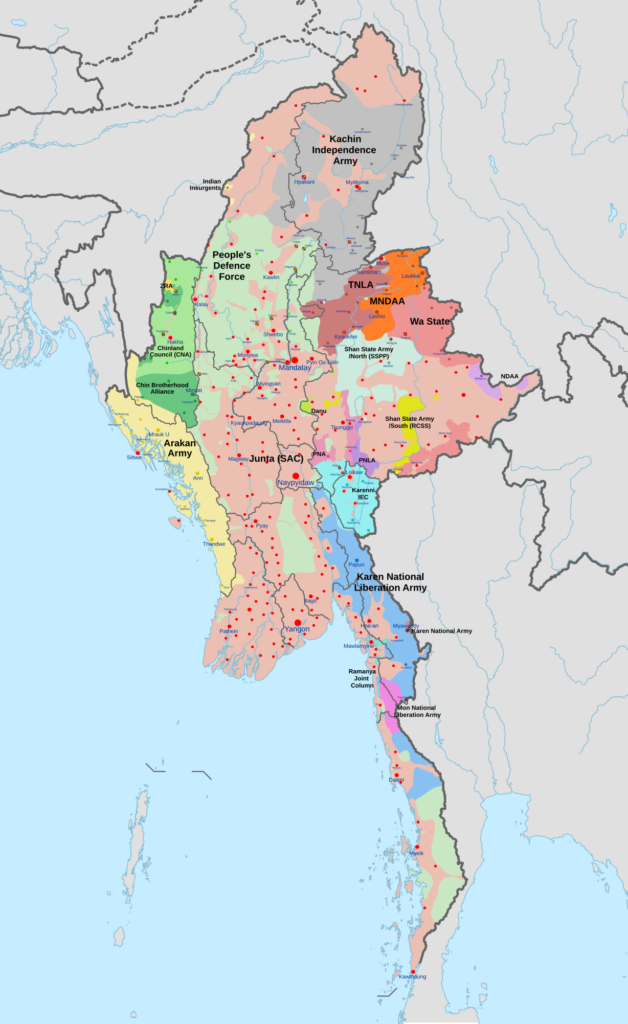
Current Frontlines
Rakhine State: The Arakan Army has seized significant territory, including Maungdaw and Ann, effectively controlling most of the western border with Bangladesh.
Sagaing and Magway Regions: Once peaceful central areas are now hotspots, with PDFs conducting guerrilla warfare and the military responding with airstrikes and scorched-earth tactics .
Chin State: The Chin Brotherhood Alliance has declared Mindat a junta-free zone after capturing it in December 2024.
Shan State: The strategic city of Lashio changed hands in April 2025, with the junta regaining control after a temporary occupation by the Myanmar National Democratic Alliance Army (MNDAA), facilitated by Chinese mediation.
Humanitarian Crisis
The situation has deteriorated further due to a 7.7 magnitude earthquake on March 28, 2025, which killed over 3,700 people and displaced thousands more. Despite temporary ceasefires declared by both sides for relief efforts, the military resumed airstrikes shortly after, complicating aid delivery.
The United Nations World Food Program has announced cuts to food aid for over one million people due to funding shortages, exacerbating the crisis for vulnerable populations, including the Rohingya.
International Dynamics
China has played a dual role, mediating ceasefires while also reportedly supplying arms to the junta and restricting resources to resistance groups . The junta has announced plans for elections in December 2025 or January 2026, but these are widely viewed as attempts to legitimize military rule amid ongoing conflict.
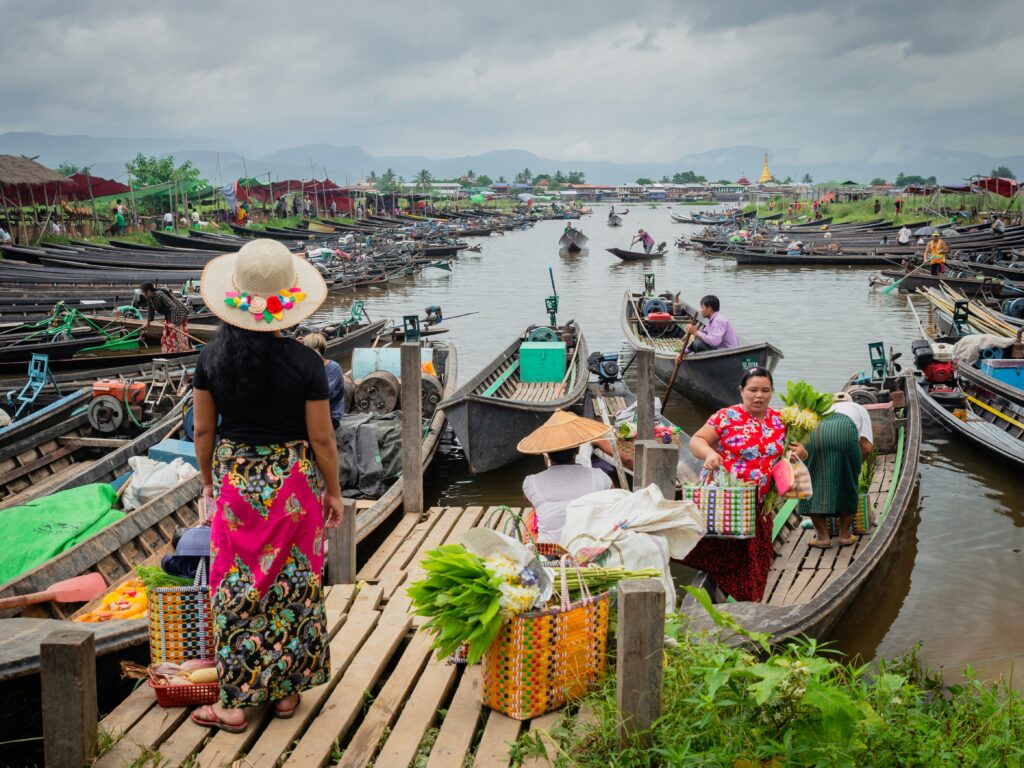
1. Visa Requirements: What U.S. Travelers Need
U.S. passport holders must apply for an eVisa before arrival (valid for 28 days for tourism). Apply at https://evisa.moip.gov.mm.
Your passport must be valid for six months. You’ll need proof of accommodation and a return or onward ticket.
As always, check with the US State Department for updated advisory notices – especially important here. As of 2025, Myanmar is listed as Level 4: Do Not Travel Here.
Tip: Print your visa confirmation — immigration officers may ask for a physical copy.
2. How Safe is Myanmar for Travelers?
Did you read the previous bullet point? Major tourist hubs like Bagan, Inle Lake, and Yangon are generally safe and welcoming. However, certain border regions are restricted due to ongoing ethnic conflicts.
Check the U.S. State Department and local news before you go.
For solo female travelers…
Most report warm, respectful encounters with locals. Stick to well-traveled areas, dress modestly, and take usual precautions.
Tip: Use taxis or hotel-arranged drivers after dark. Apps like Grab work in Yangon.
LGBTQ+ Travel…
While same-sex relations remain technically illegal (a holdover from colonial law), enforcement is rare in urban areas. Public displays of affection (any couple) are uncommon.
Advice: Be very discreet, especially in rural or religious areas. Yangon’s art and expat scenes are more open-minded.
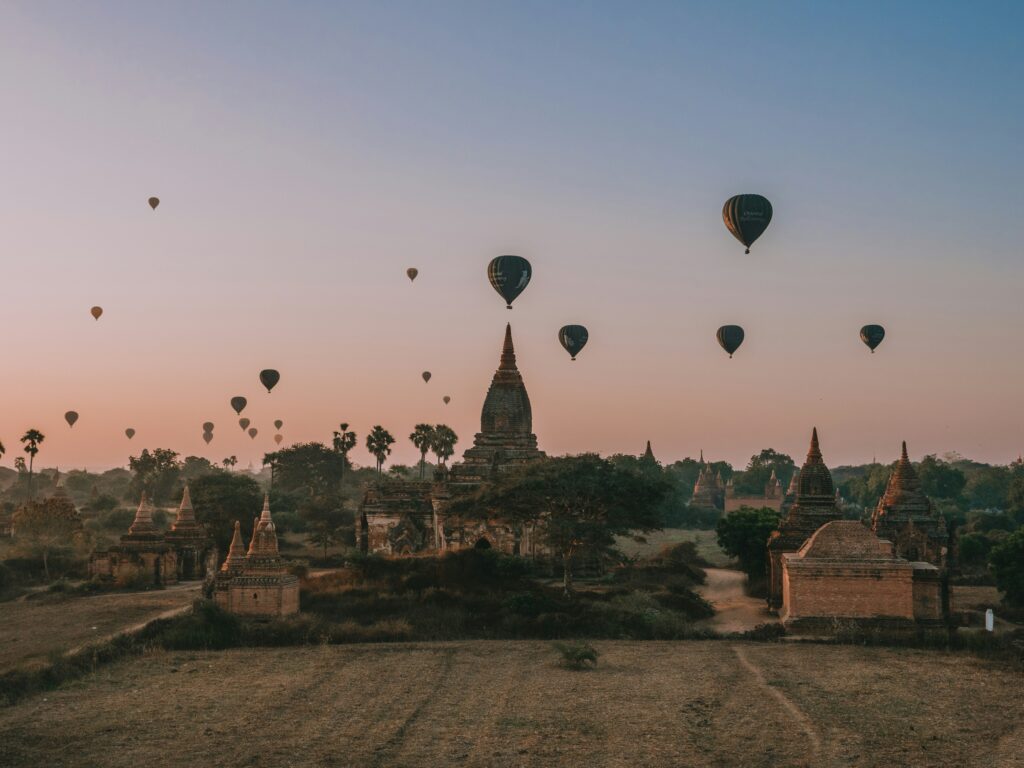
3. Cultural Experiences You Shouldn’t Miss
Sunrise in Bagan
Float in a hot air balloon or climb a viewing hill to watch the mist rise over thousands of ancient pagodas. Unreal.
Longtail Boat on Inle Lake
Visit stilt villages, floating gardens, and see the famous one-legged rowers. Hit the market if it falls on your day.
Visit Shwedagon Pagoda at Sunset
Yangon’s sacred heart. Walk barefoot, bring flowers, and feel the reverence.
Hike to Mount Popa Monastery
A dramatic pilgrimage site atop a volcanic plug — the climb is steep but worth it.
Take a Train to Nowhere
The circle train in Yangon is a living postcard of daily life. Or go big: the Goteik Viaduct train ride is one of the most thrilling in Asia.
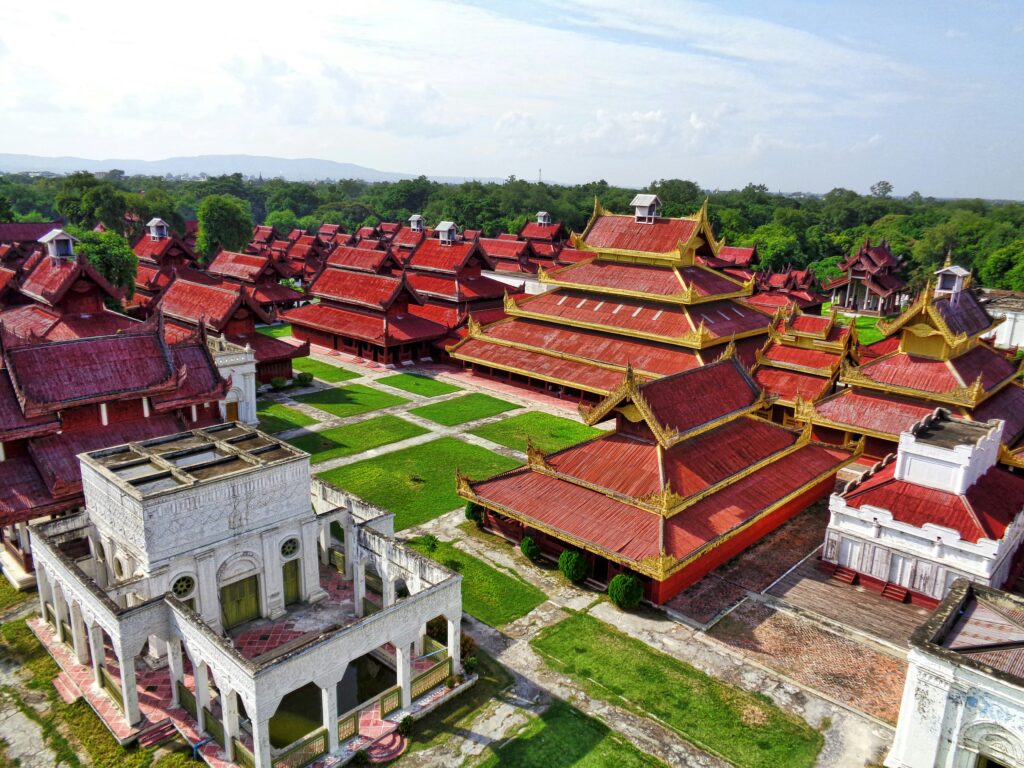
4. Money: How to Pay and What to Budget
What’s the Currency?
Kyat (MMK). $1 USD = around 2,100 MMK (subject to change — check rates!).
Do You Need Cash?
Yes, and lots of it. Credit cards are accepted at high-end hotels but not in most restaurants or shops.
Exchange Tips:
Bring crisp, uncreased USD bills — they’re picky. Change money at banks or hotels, not street vendors.
Our Tip: Avoid ATMs in rural areas — they’re frequently not reliable. Stock up before heading out.
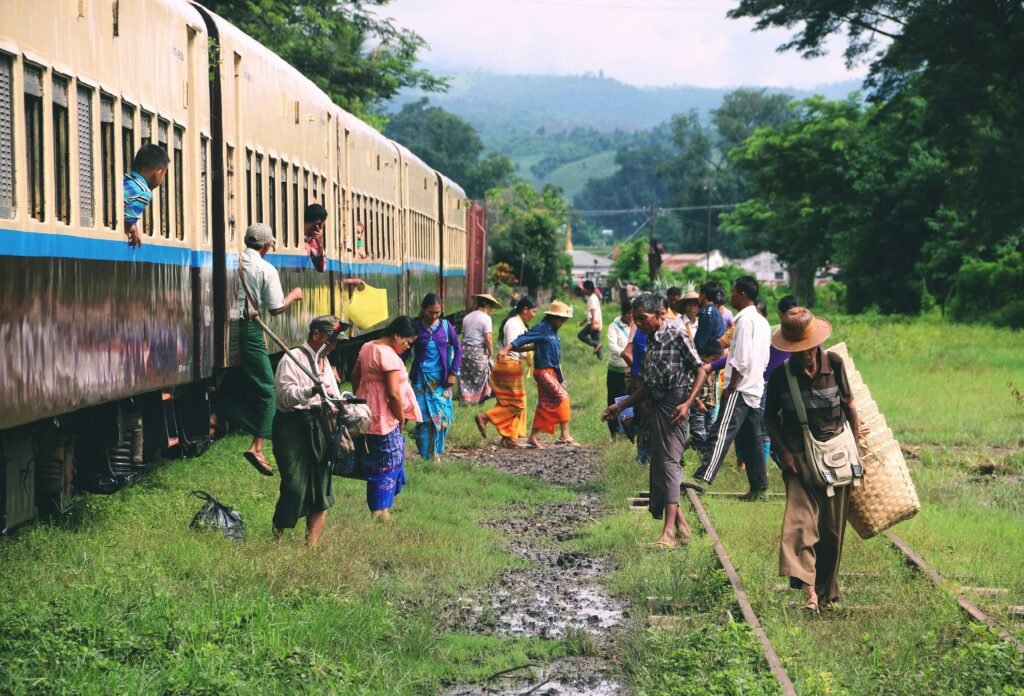
5. Transportation: Getting Around Like a Local
In Cities:
Taxis rule — there’s no public train in Yangon. Negotiate the fare or use Grab.
Buses:
Long-distance buses are comfy and reliable — JJ Express is a favorite among travelers.
Trains:
Slow but scenic. Great for the experience, less for efficiency.
Boats:
From Mandalay to Bagan, try a slow river cruise — peaceful and unforgettable.
Sustainable Note: Support local drivers and slow travel. Avoid short domestic flights where possible. Also please be aware that local carriers do not have the best safety records.
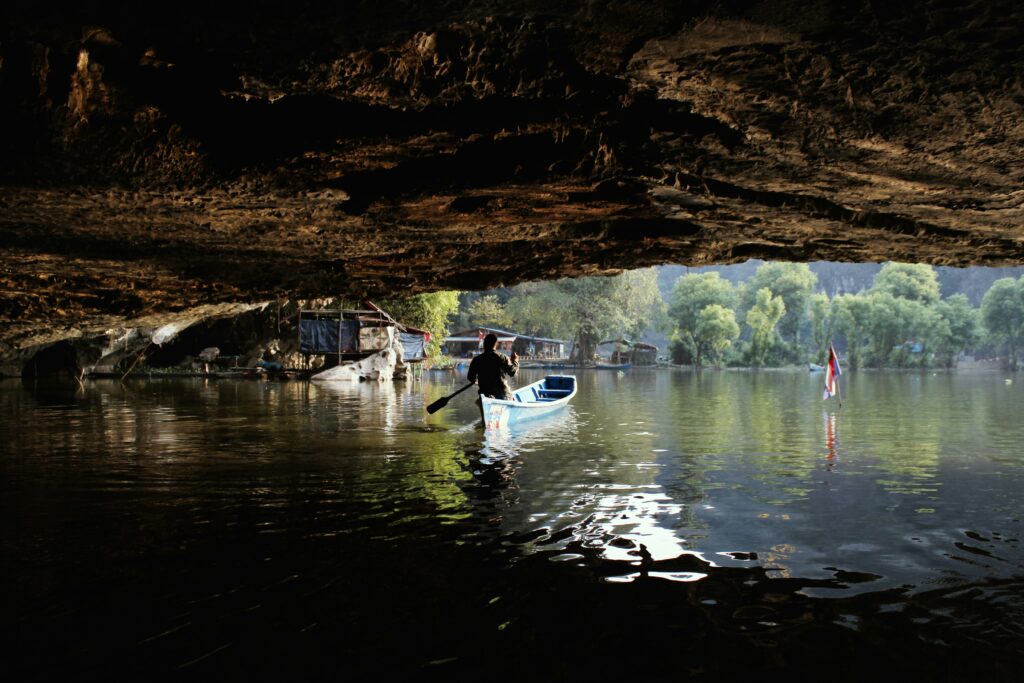
6. Neighborhoods You Should Know
Downtown Yangon
Colonial architecture, teahouses, street food. Visit Sule Pagoda and walk the grid.
Nyaung U (Bagan)
Budget-friendly, vibrant, and close to temple hopping.
Nyaung Shwe (Inle Lake)
Laid-back base for lake adventures, with bike rentals and canalside cafés.
Pyin Oo Lwin
A former colonial hill station near Mandalay with botanical gardens and British-style mansions.
Hpa-An
Caves, karst cliffs, and unreal scenery. Trek Mount Zwegabin for sunrise views.
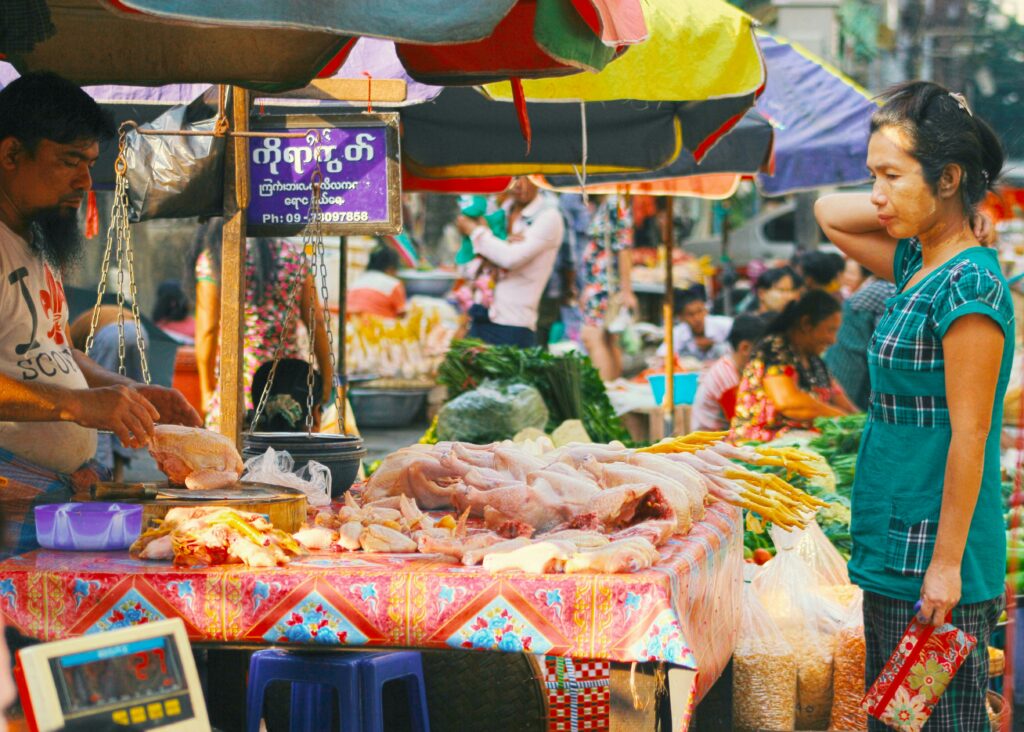
7. Food Safety: What to Eat and What to Avoid
Try This:
Mohinga (fish noodle soup)
Tea leaf salad (lahpet thoke)
Shan noodles
Grilled river fish
Ask your doctor to stock you up on travel meds and immunizations – including malaria meds, as it is a problem in some regions. Bring along a DEET-based mosquito repellent. And note that dengue fever and Japanese encephalitis can be found here and both are mosquito-borne diseases.
Avoid: Raw salads unless you’re sure they’ve been washed with purified water. Stick to cooked food.
Drinking Water: Not safe from the tap. Always use bottled or filtered water.
Sustainable Tip: Bring a filter bottle like Grayl or Lifestraw to cut down on plastic.
🥣🍜🌶️ How to Eat Like a Local in Myanmar
Start at a Teahouse: Order sweet milk tea and samosas.
Know Your Lahpet: Fermented tea leaf salad is a must — spicy, crunchy, addictive.
Use Your Hands: In traditional homes or roadside restaurants, you might eat with your right hand (wash up first).
Don’t Expect Alcohol Everywhere: In many areas, especially around temples, booze is frowned upon.
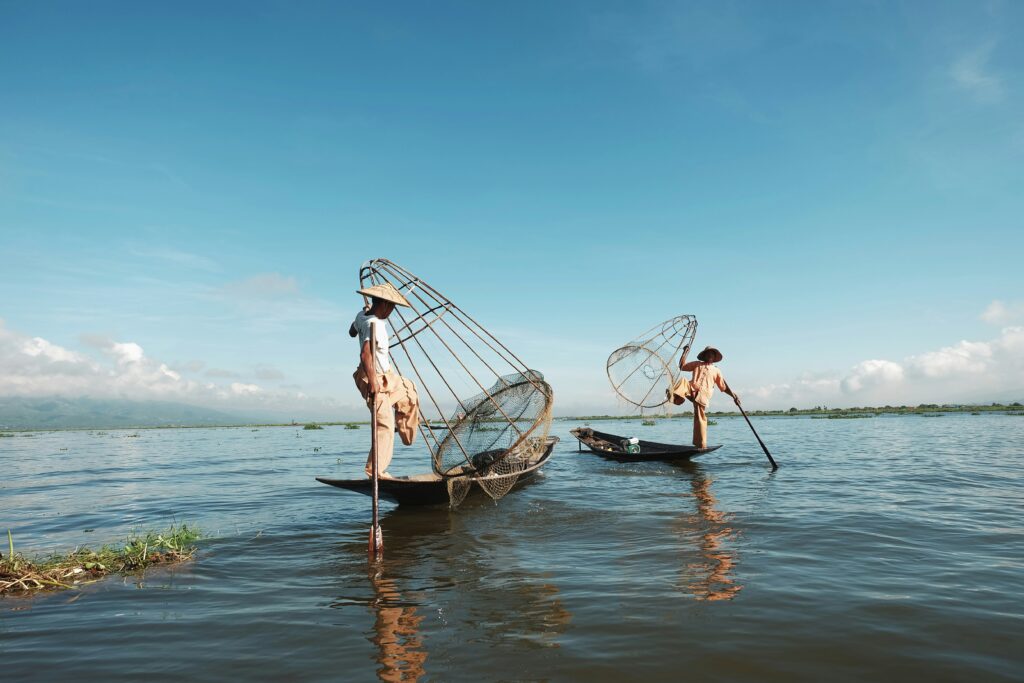
8. Respect the Culture: Don’t Be That Tourist
Dress Modestly:
Cover shoulders and knees, especially at temples.
Temple Etiquette:
Remove shoes and socks. Don’t point your feet at Buddha images. Be quiet, respectful.
Taboos:
Don’t touch someone’s head.
Don’t display affection in public.
Don’t climb or sit on sacred structures — even if they look like ruins.
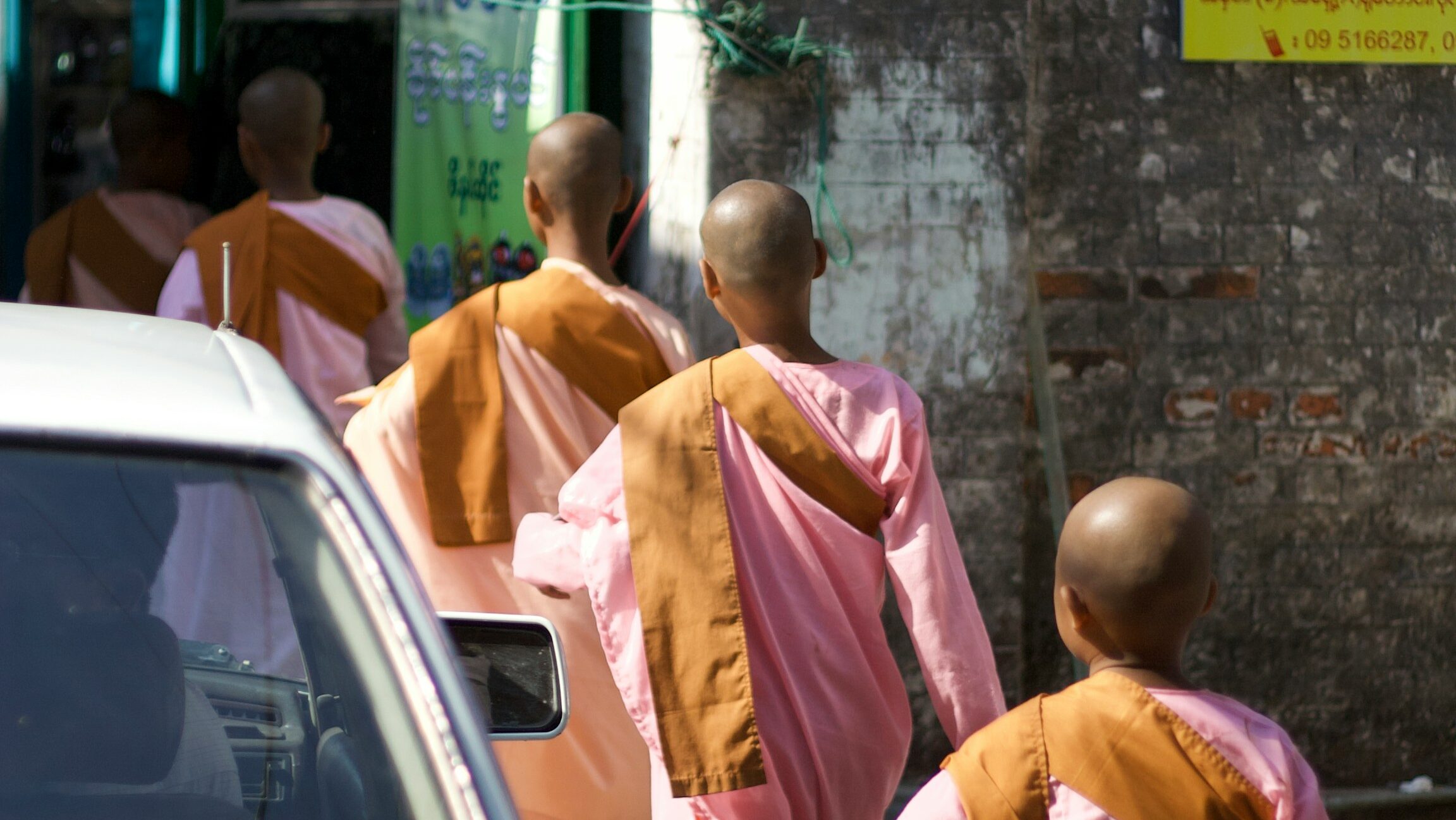
9. Packing Tips for Myanmar
Long pants or skirts and covered shoulders
Sandals (easy on/off for temples)
Mosquito repellent (especially in Bagan and Inle)
Rain jacket (monsoon season runs May–October)
Power adapter (Type C, D, or G — bring a universal one)
Filter water bottle for sustainability
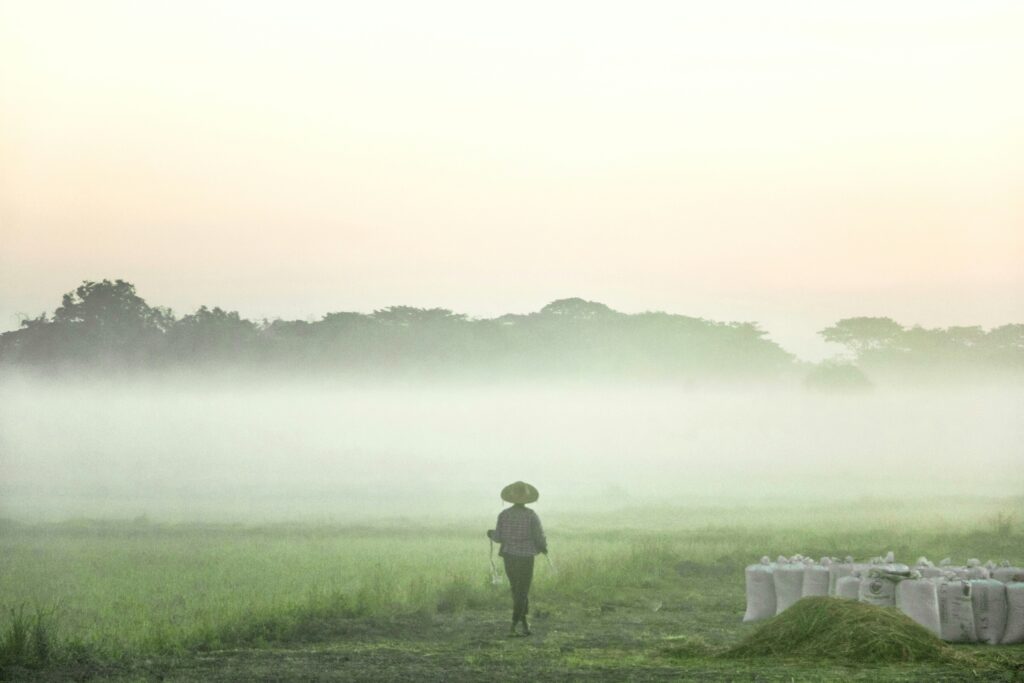
BONUS: Dream Big
Films and Docs Set in Myanmar:
The Lady (2011)
Biopic of Aung San Suu Kyi, filmed partly on location.
Beyond Rangoon (1995)
A glimpse into the 1988 uprisings, with sweeping shots of temples and landscapes.
Burma VJ (2008)
A gripping documentary of citizen journalism during the Saffron Revolution.
Twilight Over Burma (2015)
A love story rooted in real political drama — controversial, touching, and visually rich.
They Call It Myanmar (2012)
A striking doc that reveals the daily lives of ordinary Burmese people.
Myanmar moves slow — and that’s the point. Whether you’re gliding across a lotus-strewn lake or sipping tea in the shadows of ancient stupas, there’s magic in the stillness. Come curious. Come humble.
— The Cerca Travel Crew